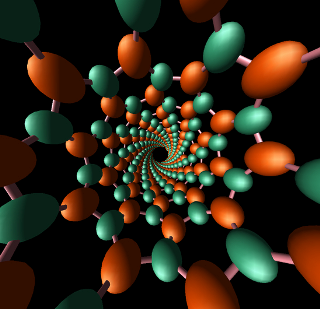Sep 5 2014
Nearly 20 years ago researcher Alex Zettl of the Department of Energy’s Lawrence Berkeley National Laboratory (Berkeley Lab) synthesized in his lab a new material never before seen by nature: boron nitride nanotubes, the strongest, lightest, most thermally conducting, and most chemically resistant fiber known to exist. Now a startup has licensed this technology with the aim of manufacturing boron nitride nanotubes for commercial use.

Berkeley Lab has licensed the invention to BNNT LLC, a startup company based in Newport News, Virginia. BNNT has also developed its own technology for producing high-quality nanotubes in large quantities and envisions it for eventual uses in space, satellites, jet engines, cancer therapies, and a wide range of other applications. Its manufacturing technique was developed jointly by the Department of Energy’s Jefferson Lab, NASA’s Langley Research Center, and the National Institute of Aerospace.
“This shows that resources out of the national infrastructure—Berkeley Lab, Jefferson Lab, and NASA—are supporting startups and putting new technologies in the marketplace,” said Roy Whitney, president and CEO of BNNT. “It’s very exciting, and could be transformative.”
Boron nitride nanotubes were first theorized by Berkeley Lab materials scientist Marvin Cohen in 1994 and made in the lab the following year by Zettl. Whitney said the challenge has been to make long, defect-free nanotubes in large quantities. “In the world of nanotubes quality is a very big deal,” he said.
Whitney says BNNT’s nanotubes, which look like cotton balls, are 100 times stronger than steel and stable to up to 900 degrees Celsius. Nanotubes are composed of a sheet of material that may be a single atom or a few atoms thick and rolled into a thin cylinder. While carbon nanotubes are more prevalent, boron nitride nanotubes are highly sought after because they are as strong as carbon nanotubes, but they have a much higher resistance to heat, high voltage, and neutron radiation.
Initially, BNNT’s customers will be researchers in academic, commercial, or government labs. “If you want to explore the properties of this material, you just really haven’t been able to buy it,” Whitney said. “Our main customers will be research labs for some time. As people learn what to do with it, they will want to incorporate it into very high-end products.”
Whitney said he believed that boron nitride nanotubes will at some point complement the high-end of the market for carbon nanotubes, which are being used in thousands of uses.
“We are excited about this opportunity because boron nitride nanotubes will now take their place with carbon nanotubes for driving innovation in science and industry,” said Elsie Quaite-Randall, Berkeley Lab’s Chief Technology Transfer Officer and head of the Innovation Partnerships Office.
Source: http://www.lbl.gov/